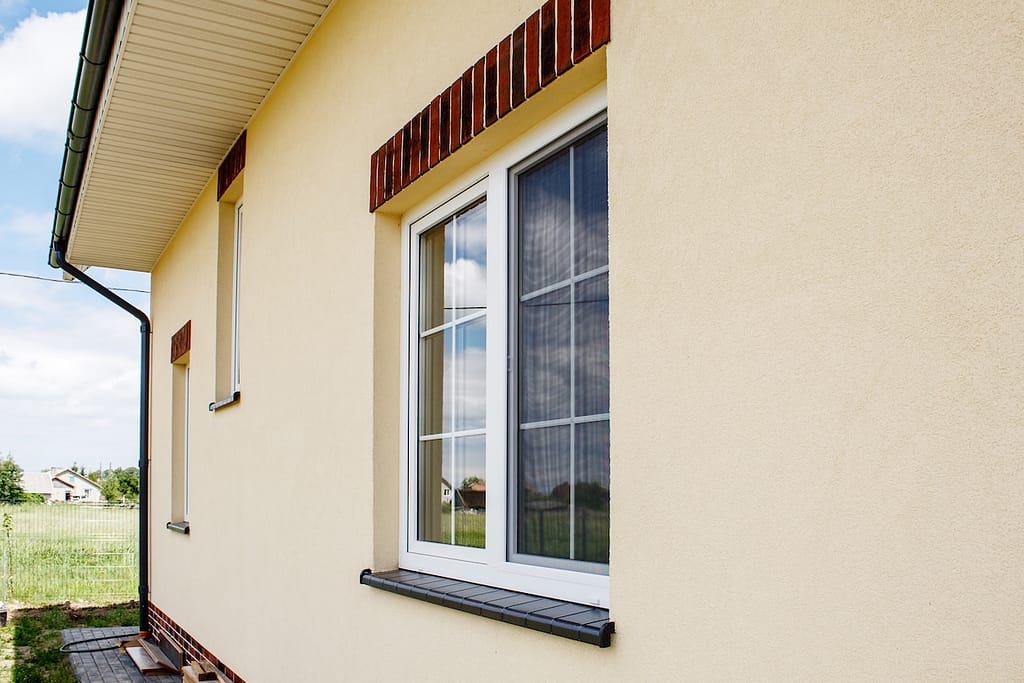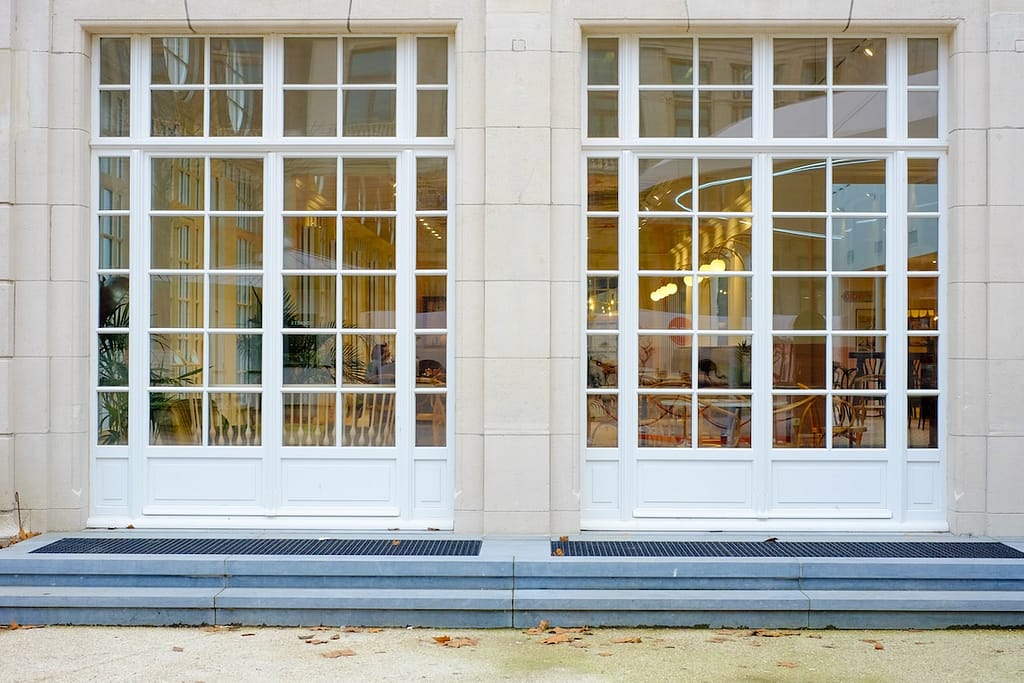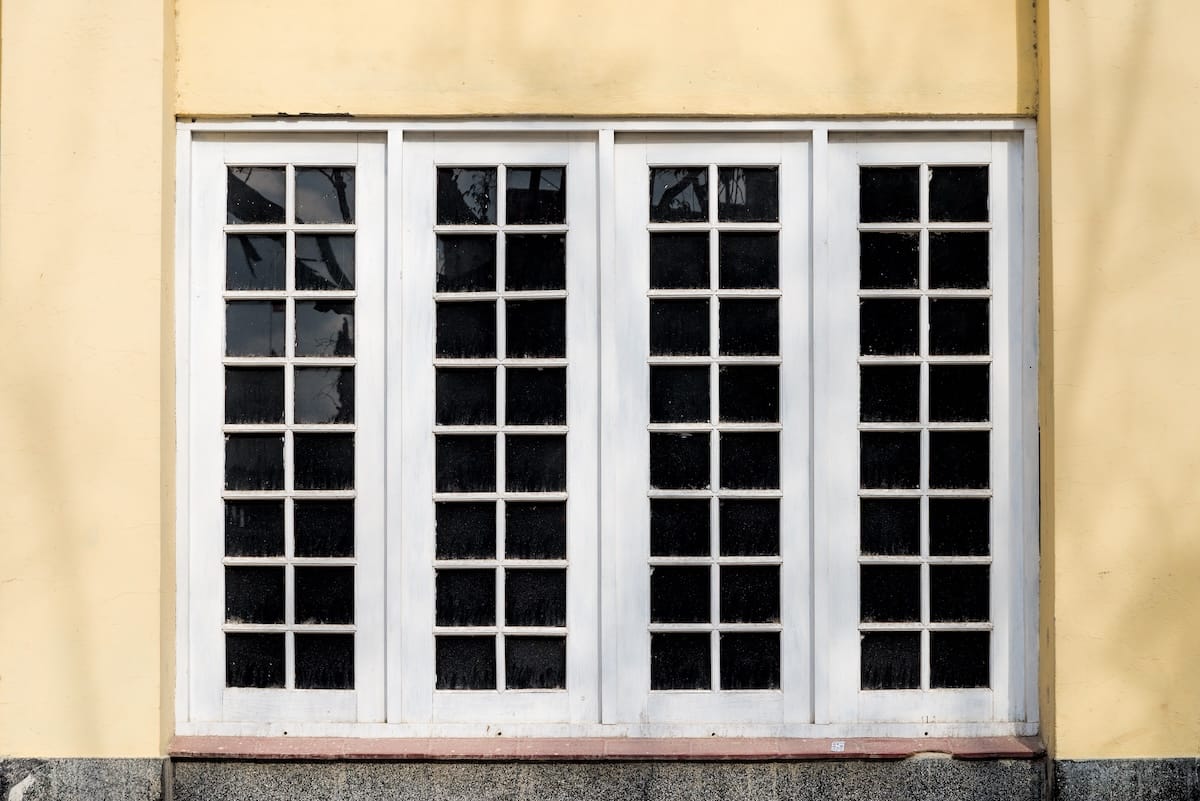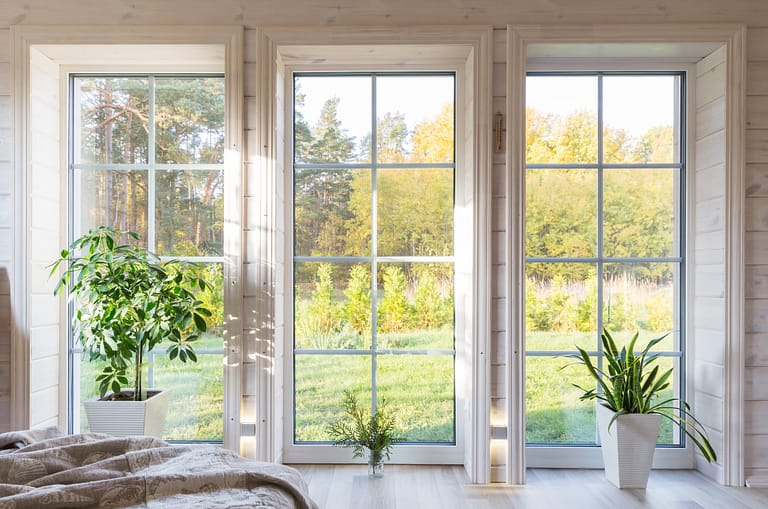When it comes to designing or replacing windows, homeowners often focus on frame materials or glass efficiency, but one detail has the power to completely reshape your home’s look: window grids. Grids, also known as grilles or muntins, are the patterns that divide the glass into sections. Originally, they were a necessity when large glass panes couldn’t be manufactured. Today, they’re a choice — and one that influences curb appeal, interior style, and even property value. With today’s modern replacement window options, you can customize grids in countless ways to reflect your home’s unique character.
In this guide, you’ll learn:
- The design and functional role of grids in homes today
- Seven types of window grids and how they differ
- How to match grid styles to specific architecture
- Maintenance and value tips to extend their lifespan
- How grids shape the overall personality of your home
🌆 The Role of Window Grids in Home Design

Window grids do more than divide panes — they connect a home’s character to its architecture and create first impressions that last. They’re also versatile enough to match both historic and modern homes.
- Architectural Consistency: Certain grid styles are essential for preserving the look of historic homes. Without them, the exterior feels incomplete.
- Balance and Proportion: Grids break large glass surfaces into sections that feel more harmonious with other exterior details.
- Visual Personality: The grid pattern you choose can make your home look rustic, elegant, traditional, or cutting-edge modern.
- Market Appeal: Buyers often associate windows with grids as a mark of higher quality or more thoughtful design.
- Natural Light Control: While grids don’t block sunlight significantly, they can subtly shape how light enters and interacts with your interior.
🪟 7 Types of Window Grids Explained
Homeowners have several grid options to choose from. Each has different pros and cons in terms of cost, authenticity, cleaning, and aesthetics.
1. Simulated Divided Lites (SDLs)
SDLs create the look of old-world craftsmanship by applying grids to the outside surface of insulated glass. A spacer bar may be placed between panes for added depth.
- Looks authentic to historic designs
- Works with energy-efficient glass units
- Costs more than other options but adds value
2. Grille Patterns Between Glass (GBGs)
Here, the grid pattern sits between the panes of insulated glass.
- Easier to clean with no raised lines
- Gives a smooth surface inside and out
- Less realistic but budget-friendly
3. Removable Interior Grids
Removable grids snap into place on the inside of the window.
- Flexible: remove them for cleaning or style changes
- Typically the least expensive option
- Doesn’t deliver the same visual depth as SDLs
4. True Divided Lites (TDLs)
TDLs use multiple small panes of glass separated by physical muntins.
- Historically accurate and authentic
- Less efficient than modern grid alternatives
- Rare in new construction but prized for restoration
5. Hybrid Grids
Hybrid grids use SDLs on the exterior for depth and GBGs inside for easy cleaning.
- Combines authentic look with convenience
- Mid-range in price and widely popular
6. Exterior-Only Grids
Some grids are applied only to the exterior surface of the glass.
- Creates curb appeal without affecting inside cleaning
- Useful when interior design leans toward open glass
7. Custom and Specialty Grids
For homeowners who want bold statements, custom grids include unusual shapes, asymmetry, or patterns.
- Common in modern or architectural homes
- Adds uniqueness but comes with higher cost
👉 Matching Grid Styles to Architectural Themes

Not every grid looks right on every home. Matching styles to architecture ensures windows enhance rather than clash with your design.
Colonial Homes
- Best with classic Colonial grids (six-over-six, nine-over-nine)
- Emphasizes symmetry and tradition
- Adds charm and authenticity
Craftsman or Prairie Homes
- Prairie-style grids highlight perimeter lines and corner squares
- Works with the horizontal emphasis of Craftsman designs
- Clean, geometric look balances wood detailing
Farmhouse or Cottage Homes
- Farmhouse grids with one or two vertical bars create rustic appeal
- Works well on tall windows for barns and cottages
- Simplifies design without losing charm
Tudor or European Homes
- Diamond or lattice grids emphasize elegance
- Adds historic, old-world character
- Works with steep rooflines and ornate trim
Modern and Contemporary Homes
- Minimalist or asymmetrical grids
- Thin lines or even single vertical divisions
- Focuses on large glass areas while maintaining design edge
By selecting grids aligned with your home’s architecture, you not only preserve integrity but also elevate curb appeal.
🛡️ Care, Maintenance & Long-Term Value

While grids are low-maintenance compared to other window elements, they still require care. Following a routine protects both appearance and performance.
Cleaning and Upkeep
- SDLs: Clean gently with non-abrasive materials
- GBGs: Clean glass as normal — no grid maintenance required
- Removable grids: Take out for thorough cleaning periodically
Inspections
- Check annually for peeling paint or fading finishes
- Ensure grids remain firmly attached
- Watch for seal failure in hybrid grids with spacer bars
Seasonal Checklist
- Spring: Clean off pollen and dirt buildup
- Summer: Watch for UV damage on painted or wood frames
- Fall: Confirm secure attachment before harsh weather
- Winter: Check for condensation around muntins
When Replacement Is Needed
- Cracks in frames or grids detaching from glass
- Persistent drafts around SDLs or TDLs
- Warped removable grids that no longer fit properly
Pros and Cons Overview
| Type | Pros | Cons |
| SDLs | Authentic look, adds value | Higher cost, more cleaning |
| GBGs | Easy cleaning, affordable | Less realistic, flat appearance |
| Removable | Flexible, cheapest | No depth, less permanent |
| TDLs | True historic accuracy | Poor efficiency, costly |
| Hybrid | Combines realism and convenience | Mid-to-high cost |
🌟 Bring Character to Your Home with Window Grids
Window grids might seem like a subtle design choice, but they define how your home looks and feels from the street. From the symmetry of Colonial grids to the bold geometry of Prairie patterns or the sleek minimalism of modern grids, each option tells a story about your home’s style. With today’s customization options, you can enjoy timeless design while keeping your windows efficient and low-maintenance. If you’re ready to explore which grid type matches your home’s architecture and personality, contact us today to schedule a consultation with a trusted professional.







